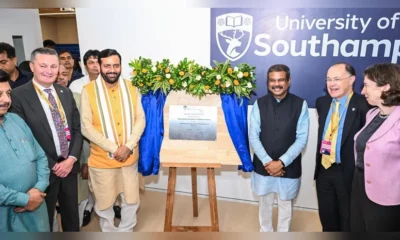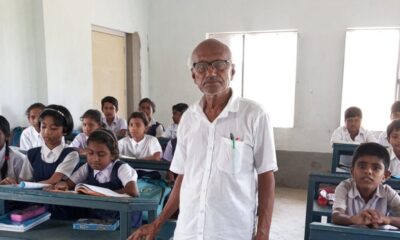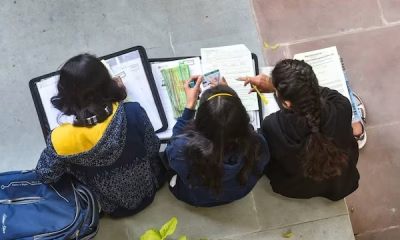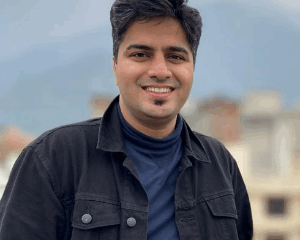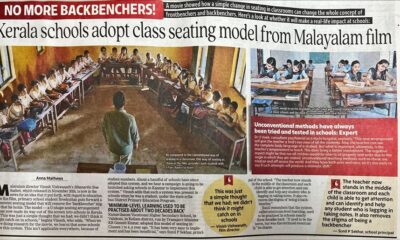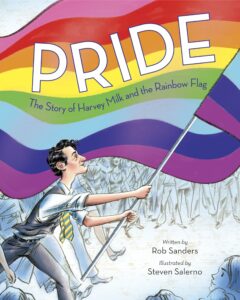Opinion
Part 4 – Students themselves tell us what they want in a school! Are we ready to listen, minus judgement?
Forget about what students ‘need’. Students themselves tell us what they want! Are we ready to listen, minus judgement? Here is the third part in our series on children’s views on their dream school.
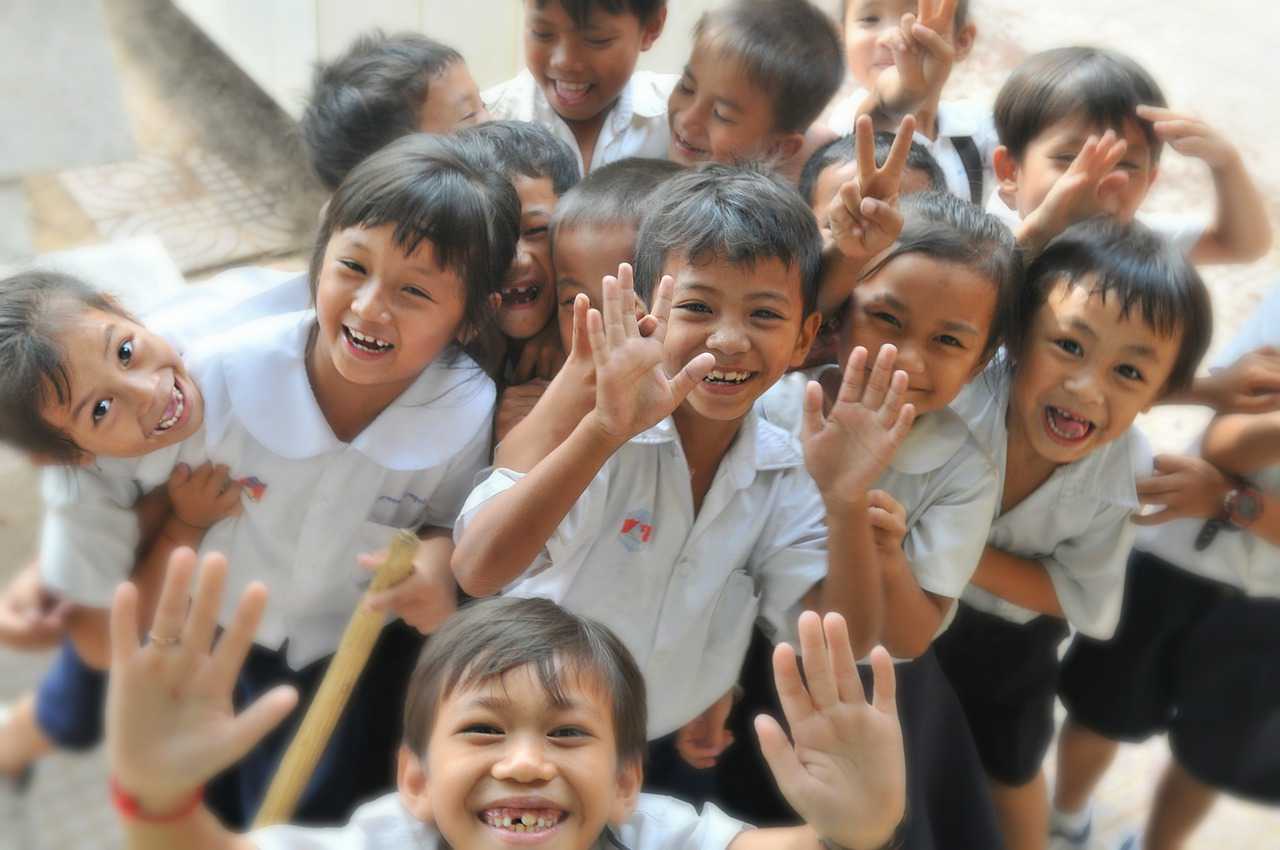
From the government to the management to educators to parents – everyone seems to have a say in the school system but for the main stakeholders: the children themselves. With World Children’s Day (November 20) and National Children's Day (November 14) this month, ScooNews threw open its pages, inviting this long-neglected and most important segment – children – to tell us exactly how they envision their dream school. Read on, educators, there might be nuggets of value for us all in here…
“Each class would have freshers, juniors and seniors”
Arjun Sahai
My thought for an ideal school would be one with only fun and excitement. The school would be circular in shape and blue in colour. There would be no particular dress to wear, and children would have the permission to leave whenever they wanted. There would be exciting sections like a petting zoo, a swimming pool and a park. There would have also been a fairy tale room with different fairy tale characters. To eat, children would have to go to the ‘fairy tale food restaurant’. In this restaurant, there would be foods that one reads and sees in fairy tales like rainbow ice-cream, insect pizza, wizard pie, dinosaur popsicle and dragon’s drink. This school would also have a reading room with different sorts of books and it would be painted in different colours. Each student could go to any room whenever they wanted to. Each student would have to pay Rs.10 before entering a room because the money would help to make more exciting rooms in the school. There would be different sports fields and courts in the school.
There would be only a few teachers in this school, some strict and some fun. The strict teachers would like discipline in the classes, and the fun teachers would let the children do whatever they liked. In each class, there would been three batches – freshers, juniors and seniors – so that children could make friends with children elder to them. I would love to go to a school like this. It would feel like a being on a holiday!
(Eight-year-old Arjun Sahai studies in class III, at National Public School)
“What the child thinks should get jotted down on the smartboard”
Tavishi Saxena
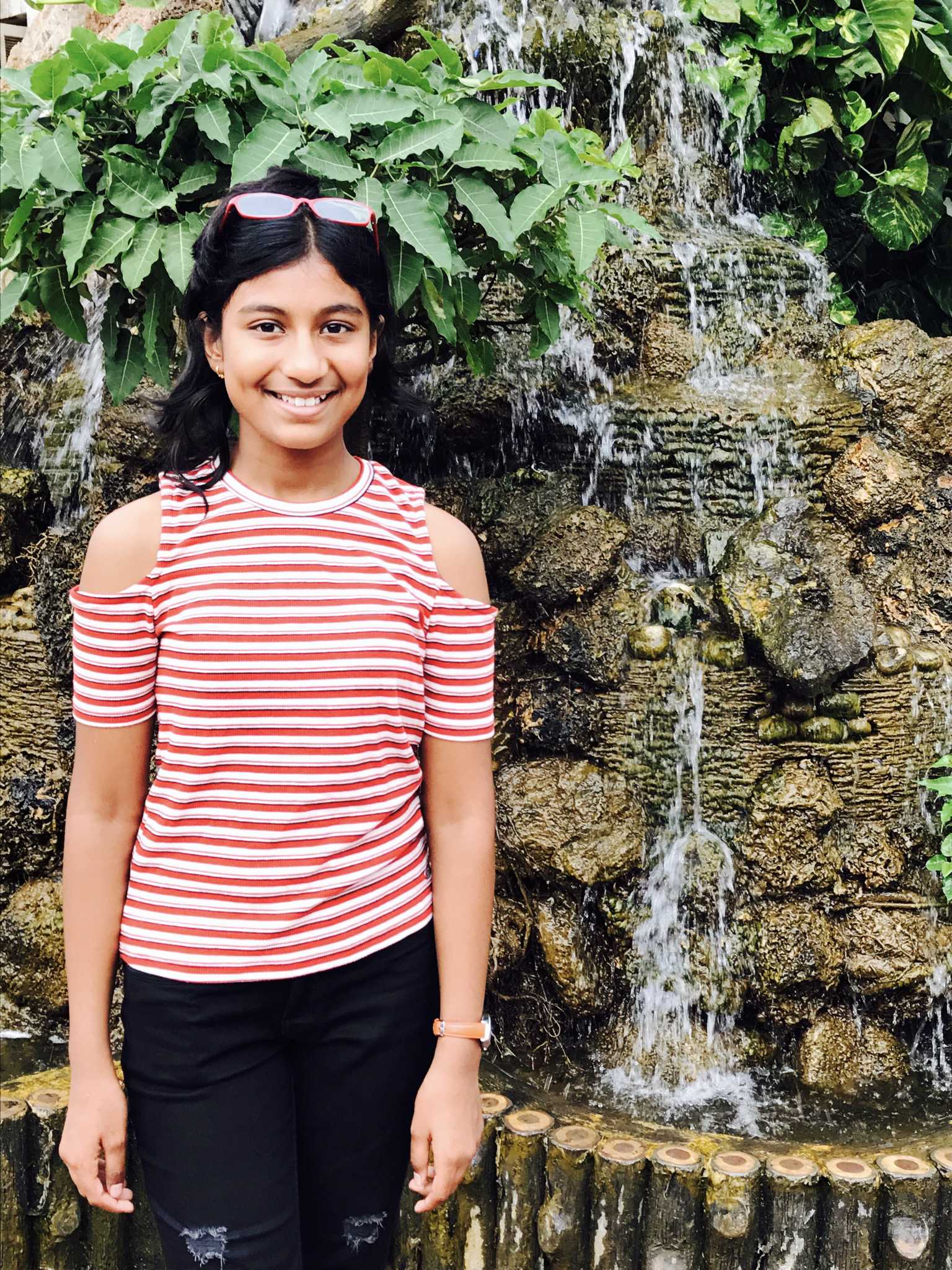
Tweet-tweet, buzz-buzz; such melodious and peace providing sounds which help to concentrate with an increasing ease, is what I want as the environment of my school. The magnanimous, technophile and eco-friendly classroom with extra relaxing, cushioned sofas should be a classroom. This would keep the children content and lead them to study without being pressurized. For me, my dream school should have escalators and the attendance should be by a face detector. There should be glass walls and when swiped the scenic beauty should be changed. The smartboards should be linked in a way that what the child thinks is jotted down on the screen giving a great exposure to the thinking of every child. I would like to have different study methods like for humanities we can have a play and enact the people to get a better and fruitful understanding. The educators should teach with a great passion and encourage the children by bringing out talents that are not only in direction of science but a fusion of scientific and artistic mind. Thinking and passion for learning should be the basis of a child’s genius. Smart classes can be more fun to learn and movies related to the subject should also be projected. We can discuss a lecture on Facebook or create a google hangout to talk about a class assignment.
Play and laughter are said to simulate the imagination and to increase the neuro-transmitters for memory and alertness so, we should have a positive learning environment allowing us to play in between to shape our brain, revitalise our soul and open our imagination. Home assignments should not be based on absorbing large amounts of factual knowledge but it should have the three Cs: critical thinking, collaboration and creativity. Now we come to the most favourite part that every child adores and it’s none other than FOOD! The ambrosial and fresh smell of the yummy food should activate the olfactory senses of the children. The kids should be given a few intervals to eat their loved food and this would help them to study with a refreshing mind. All these things, according to me, should be added in the school but at the end a school also has some moral values and I do not want them to be removed. The children when being given so many comforts should not find it difficult to follow the rules and principles of the school.
(Tavishi Saxena, 13, studies in grade VIII, Jayshree Periwal International School, Mahapura, Jaipur. Her Instagram/ Facebook page Swirlingbrushes@tavishiart displays her passion for art)
“Teachers will allow us to speak out our minds”
Chrisanne D’Souza

My dream school would be fun and interesting. There would be various types of activities for all kids. The lesson periods would contain fun learning and less writing. The playground will be extraordinary, with swings, slides, and even fountains! During recess, we would go to the cafeteria where different types of snacks would be served. The uniforms will be colourful and we will be allowed to wear party clothes once a week – or have costume days. The teachers should allow us to speak out our minds. School bags should contain very few books, which will be easy to carry. There should also be a classroom for pets, where kids can interact with animals.
(Chrisanne D’Souza is in class V, St. Anne’s High School, Malad, Mumbai)
“My dream school students will make the change others want to see…”
Arnav Bachheti
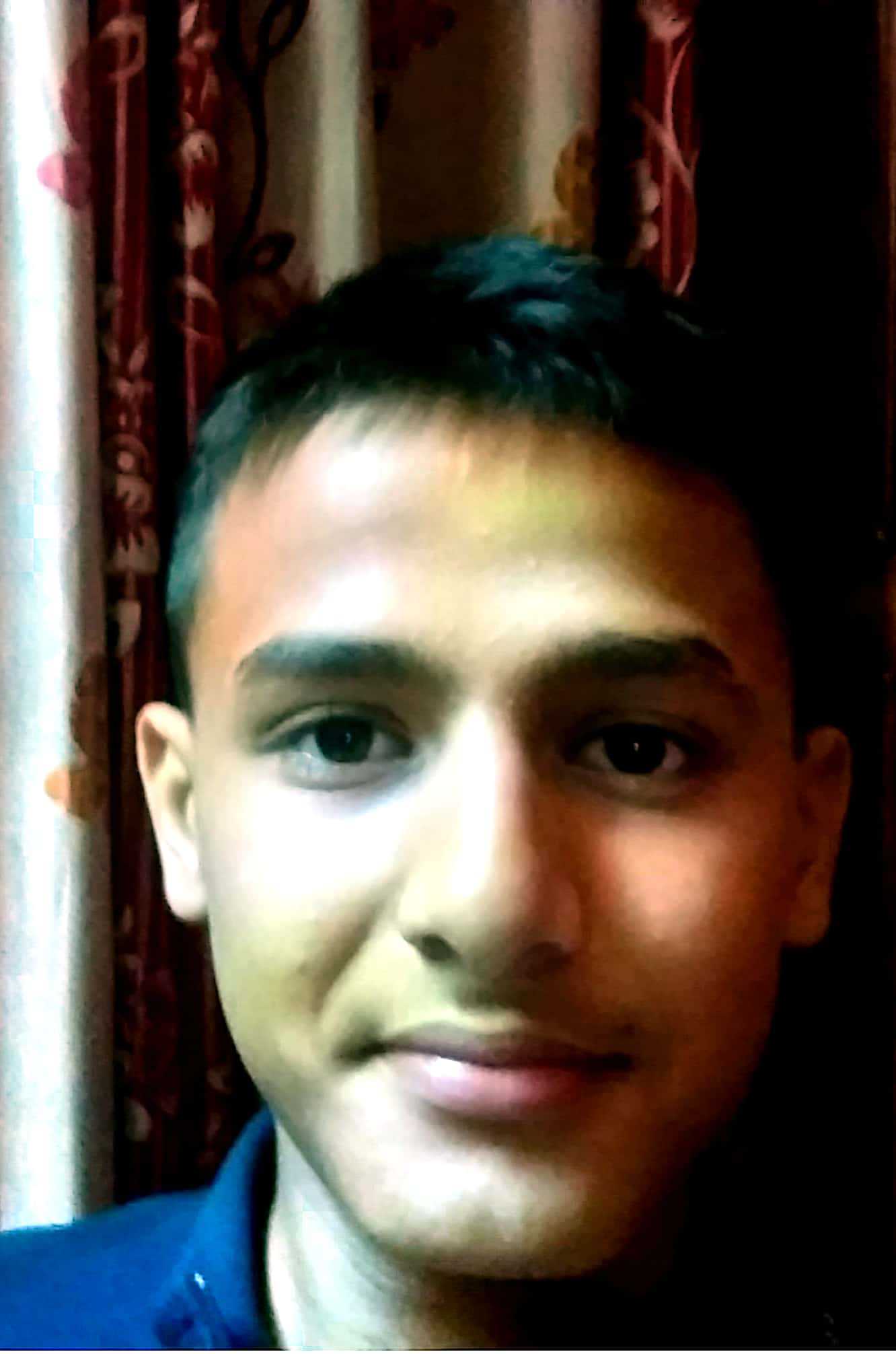
"School is a building which has four walls with tomorrow inside.” – Lon Watters
The school of my dream would be like a haven for the students. Everyone would be treated equally. There would be no fee, and mid-day meals would be provided to them. My dream school would be an ordinary school but the difference would be in the students and their thinking. Every single activity would be there. There would be no force to study. If a child thinks his career is in sports rather than in academics he /she will be encouraged. I wish for a school that teaches its students to be a little mischievous and naughty yet well behaved and grounded. There would be picnics and excursions. National and international trips would be held. Annual Day and Sports Day will be held where many reputed persons would be called as chief guests. The school of my dream would have three playgrounds, one swimming pool, one roller rink, and much more.
Children would learn that if they are not willing to learn, no one can help them but if they are determined to learn no one can stop them. My dream school students will make the change others want to see in this world. They will prove themselves to the people who think that average people can't do anything. My school would have evening practice classes for sports and other co-curricular activities. On certain days teachers would not come to classes. Students themselves will be the teachers, educators and facilitators. Students will learn collaborative skills, group management skills and, above all, social and thinking skills. They would have the best technology, including laptops and educom. My dream school would definitely make me say in future – “School life is the best phase of life.”
(Arnav Bachheti, a student of Army Public School, Birpur, Dehradun, studies in class VIII.)
"Nobody must feel out of place or lonely…"
Lakshmi Premkumar

Every school student would definitely have an answer to this question. Each one of us have our own dream of what we would want our school to be like.
I would want our teachers to interact with us and ask more questions to ignite our minds. This would make us interested in classes, unlike now when it’s just the teachers who talk and talk and all we can do is sit and nod our heads in agreement. According to me, an interesting class should be an interactive session between the teachers and students. We should be allowed to ask endless number of questions.
Each student has different interests. One student may like Math whereas another student may like history. I strongly feel we must just be taught the basics of all the subjects and then we should be given the option to choose the subjects we like.
Classes should not be confined to a room with four walls. There is so much we can learn from outside. Sitting inside a room and just reading books and writing notes are not enough. We can learn so much by just interacting with people or by observing nature and people. Math doesn’t necessarily mean I need to sit in a class and work all the sums. I can go to a basket ball ground and be asked to find the perimeter and area of the ground. Nowadays it is hands on were that makes us interested.
In my dream school there must be a place for everybody to fit in. Nobody must feel out of place or lonely. There should be a place for students who love sports, for students who aspire to take up music or students who like indoor activities.
Another thing that children seem to have is exams. I could say I am terrified and that I loathe exams. The fact that a piece of paper can decide your future sounds ridiculous to me. Children are compared based on how much they score. This makes them feel either too smart and inferior or too proud and egoistic. In my school there would be no comparison. Exams have to be written, because it is what our Education system wants, but no child shall be judged by their marks. The only criteria for judging would be their social skills and behavior, because at the end of the day when you go to the real world and interact with people you need to come off as well-mannered person.
These are some of the things I would look for in my dream school so that at the end of the day we are all equal. No one is better than the other, and there is no comparison between intelligent and dumb or rich and poor.
(Lakshmi Premkumar, a student of C S Academy,Coimbatore studies in class X. Her ambition is to be a Journalist.)
This story was our Childrens' Day special feature in the November 2017 issue.
Header image courtesy – Pixabay
Education
When AI Reaches the Top of Bloom’s—and Our Students Are Left Behind
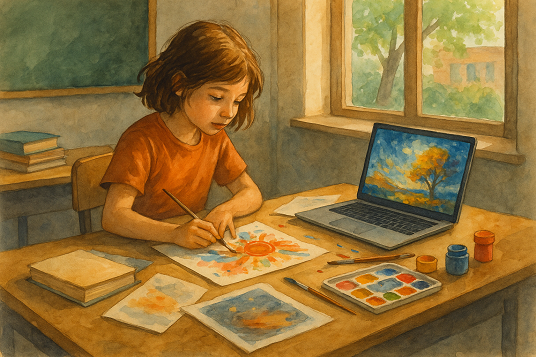
We often talk about how AI is transforming education, but are we talking enough about what it’s quietly taking away?
CREATIVITY
As Sir Ken Robinson often reminded us,“Creativity is as important as literacy.”
And yet, in a system so focused on marks, rubrics, and outcomes,creativity is often the first thing we sacrifice.
Bloom’s Taxonomy places Creating right at the top,but in many classrooms today, it feels like AI has reached that level faster than our students have.While children are still figuring out sentence structure and grammar, AI is already generating poems, paintings, and polished presentations with a single click.
Which brings us to a deeply uncomfortable question:
What happens when AI starts to “create”?
And more importantly—what happens when our students stop?
Today’s AI isn’t truly creative.It mimics. It reuses. It draws from patterns and reproduces what’s already been done.And if we don’t pause now to protect what’s uniquely human,we risk raising a generation of students who know how to use tools,but don’t know how to think.
Everything’s Starting to Look the Same
I’ve seen it. You’ve probably seen it too.
Creative writing tasks that sound strangely uniform.Artwork that feels formulaic.Presentations that are polished, yes, but empty.AI has democratised access to intelligence,but in doing so, it has started to flatten creativity.We’re now at a point where students are outsourcing not just answers,but imagination.
But true creativity cannot be prompted.It’s messy. It’s emotional. It’s born out of thinking, feeling, failing, and trying again. It lives in how we interpret the world. In how we care. In how we connect.
How Can We Bring Creativity Back?
We need to bring back the building blocks of creativity.
READ
Let students read more deeply,not just skim or summarise.Let them feel what’s in the pages, get lost in ideas, debate their favourite character in a book or movie, and form their own emotional connections.
EXPERIENTIAL LEARNING
Let’s re-focus on learning through doing,projects, fieldwork, play, nature, making mistakes, working with hands, collaborating, and reflecting.It’s in these non-linear, real-world experiences that creativity quietly blooms.
FINDING THE PURPOSE
We need to pause and ask: What is this child truly passionate about?
It could be animals, gardening, football, art—anything that sparks joy and curiosity.
Once we discover that passion, we can connect learning to it.
Let’s not just ask what they’re reading, but why they’re reading it.
What inspires them? How can that interest help them solve real-world problems?
That’s when learning becomes meaningful,and creativity starts to flow with purpose.
Because by the time they grow up,the world won’t just need people who can use AI – It will need people who can imagine what AI cannot.
Education
Design and the Future of Learning: How Architecture is Shaping Next-Gen Schools
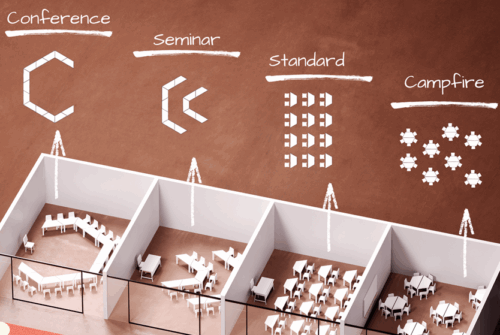
Schools Undergoing Change in India
Schools in India are undergoing a major transformation. Teaching methods are evolving, and schools must meet rising expectations from students, parents, and educators. The National Education Policy (NEP) 2020 has introduced a fresh approach to learning, making it essential for new schools to be designed with these ideas in mind. Older campuses also need thoughtful upgrades and renovations to keep pace.
Schools must adapt to stay relevant in the years ahead. Designing flexible, future-ready spaces is no longer optional, it is vital for creating learning environments that will serve new generations for decades to come.
Experiential Learning
Experiential learning is reshaping education by focusing on hands-on, experience-based learning. It encourages students to take part in activities, real-world problem-solving, and interactive projects that spark curiosity and innovation. Collaboration is central — students work together to tackle challenges, share ideas, and find solutions. This approach deepens understanding and builds teamwork and communication skills needed for future work.
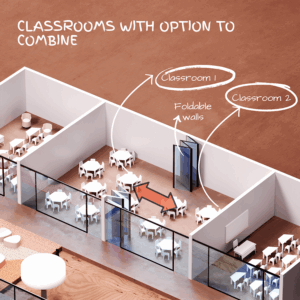
The Importance of Collaboration
Creating spaces that foster experiential learning, enhance engagement, and build critical thinking is essential. Collaborative spaces are a core part of modern school design. They encourage active learning and help students grasp concepts in a deep and meaningful way. By fostering collaboration, schools enable students to develop the skills necessary for success in a rapidly changing world.
Evolving Traditional Classrooms
Traditional classrooms are changing fast. The old rows of desks facing the teacher are giving way to flexible layouts that support different ways of learning. Today’s classrooms can easily switch between standard seating for lectures, conference-style setups for group work, seminar formats for presentations, or campfire circles for open discussions.
Good spatial design plays a big role in building critical thinking and problem-solving skills. A well-designed classroom makes it easy to rearrange furniture for each activity, helping students engage more, think creatively, and learn better together. Studies show students are more motivated and focused in classrooms that adapt to different teaching styles and make learning more interactive.
Spatial Design to Encourage Collaboration
Classrooms with movable furniture allow easy reconfiguration for group work, individual study, or interactive discussions. Flexibility is crucial in modern school design, with modular furniture, movable walls, and multipurpose rooms adapting to different needs. Removing long corridors and creating learning commons with classrooms around them is another innovative approach. Classrooms can open into these commons using sliding or folding partitions, creating a cohesive learning environment. Combining classrooms allows teachers to teach multiple groups together,
building a sense of community.
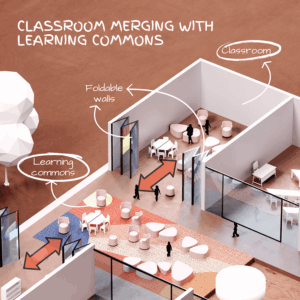
Breakout spaces offer small areas for group discussions, brainstorming, or quiet study, with comfortable seating and whiteboards. Makerspaces equipped with tools and materials foster innovation and hands-on learning by allowing students to apply theory in practice. Outdoor learning areas like gardens or amphitheaters add variety and encourage creativity. Technology-integrated spaces with interactive whiteboards and projectors enhance collaboration by making it easy for students to work together and share ideas. Learning pods provide semi-private spots for group work or individual study. Transparent walls and large windows create openness and bring in natural light, inspiring students to stay engaged.
Designing for well-being & Inclusion
Natural light, vibrant colours, and good acoustics make learning spaces more engaging. Inclusivity is essential so that diverse needs and abilities are accommodated, ensuring all students can succeed. Cross ventilation, thermal comfort, and indoor air quality are equally important — they improve physical comfort and well-being, helping students focus better.
Creativity is also key in effective learning spaces. From preschools to K-12, classrooms should inspire imagination and encourage students to think beyond the ordinary. Thoughtful design elements help create environments where curiosity and innovation thrive.
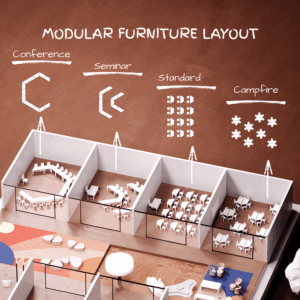
Conclusion
The future of learning will continue to evolve, but well-designed spaces will always play a central role. As educators and designers, we have a unique responsibility to create environments that inspire curiosity, spark ideas, and
support every learner’s journey. By designing schools that are flexible, inclusive, and future-ready, we build not just better classrooms but a stronger foundation for generations to come.
This article is authored by Vinod and Ranju Singhi, the Co-Founders and Principal Architects of BASICS Architects.
Education
How to Win Back Wandering Minds: Post-Summer Edition

The dopamine-rich scrolling in late mornings with amorphous freedom has made our zealous students so comfortable that they are re-entering their classrooms with minds tuned to instant gratification, not delayed rewards. Now the challenge isn’t just academics but to re-engage our bud’s attention and curiosity. Neuroscience backed motivation strategies and intentional school design could prove to be a catalyst as it will bring a positive change and enable the students to learn at a better pace.
1. Rewiring the Dopamine rush with 2 Ps, Purpose and Productivity:
Neuroscience says: Where our brains are functional to seek novelty and purpose on their own, during summer break, the buds often lean into adding the activities to their routine which are unpredictable, quick, and rewarding referring back to instant gratification, these activities may include social media, gaming, and chatting anonymously and grateful to internet and inventions, there are plethora of platforms enabling students to be distracted. And then joining back the school with a gradual drip of delayed academic rewards may seem to be a let-down for students.
Actionable tip: We as facilitators have to be the mystery-solvers channeling their energy into productivity, enlightening them with real-world challenges, interdisciplinary projects, or a mystery to solve that taps into their intrinsic curiosity. Novelty may allow us to reset their attention-even primitive changes in surrounding like rearranged desks, learning outdoors, and using the BALA method to utilize infrastructure, can signal a shift in engagement and productivity.
2. Design for Autonomy and Flow
Neuroscience says:
Neuroscience tells us that motivation really flourishes when students feel they have some control over their learning. The brain’s reward system kicks in when choices are part of the equation, especially regarding how tasks are structured or what content is covered.
Here’s a practical tip: give students structured choices, like deciding which book to dive into, which problem to tackle first, or how they want to present their findings. A design that promotes flow—complete with clear goals, manageable challenges, and instant feedback—helps keep students in that ideal zone, avoiding both boredom and anxiety.
3. Rebuild Social Motivation Through Spaces That Connect
Neuroscience tells us that connecting with peers is a huge motivator, especially after the pandemic. Our brains are wired for social interaction, which plays a key role in how we learn and engage emotionally.
Actionable tip: Create flexible seating arrangements or common areas that encourage group work and casual collaboration. Try incorporating daily activities like “curiosity circles” or peer-led problem-solving sessions to foster a sense of belonging and shared learning objectives.
4. Leverage Routines to Rewire Attention
Neuroscience shows that our habits influence our attention. After a summer of scattered focus, students thrive on rhythmic and consistent routines that help retrain their executive functions.
Actionable tip: Kick off classes with familiar “mind-on” rituals — whether it’s a thought-provoking question, a brief reflection, or a quiet sketch — to help anchor their attention. Consistency breeds comfort, and that comfort boosts confidence.
5. Make Joy a Design Priority
Neuroscience indicates that positive emotions can enhance learning by boosting neuroplasticity. When students (and teachers) experience joy, they’re more likely to engage deeply and retain what they learn.
Actionable tip: Infuse joyful moments into the day — through fun challenges, movement breaks, or a bit of humor. Allow time for students to share what excites them. A joyful classroom isn’t just a nicer place to be; it’s also more effective for learning.
Conclusion: To capture wandering minds, we need to understand how motivation truly works and design both our curriculum and learning spaces to support it. When we ignite curiosity, honor autonomy, and weave joy into the experience, even the sleepiest summer brain can come alive again.
This article is written by:

Renu Sharma
Assistant Director – Systems – Indirapuram Group of Schools
Principal – Indirapuram Public School – Crossings Republik
Education
From Academics to Empathy: Redefining Academic Success
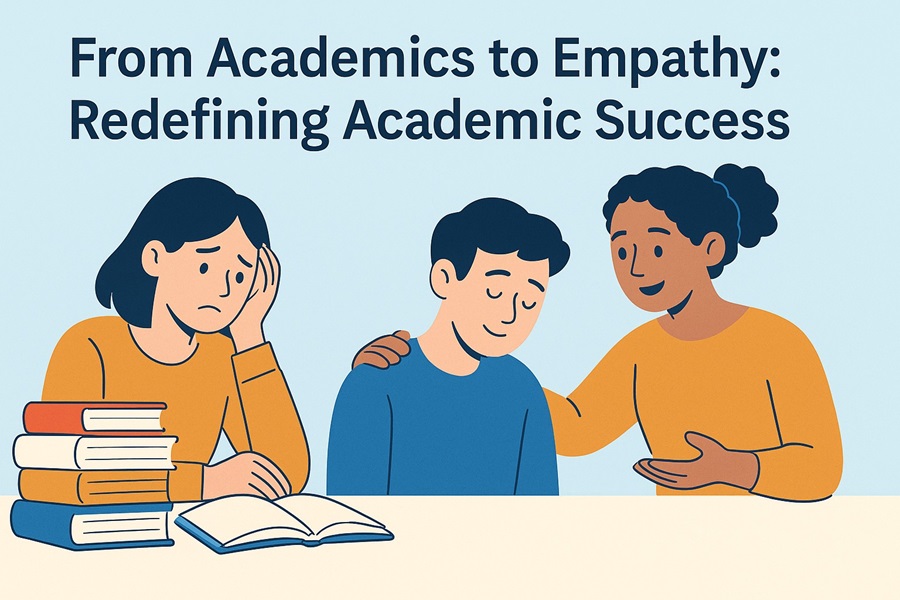
As the world of education evolves, so must our approach to learning. This article explores how empathy, emotional intelligence, and inclusive values must take center stage in 21st-century education, especially within the Cambridge philosophy.
- Moving Beyond Traditional Teaching
The world has shifted from traditional teaching methods to a more humanized approach to imparting knowledge. As educators, we can no longer afford to practice a schooling model that focuses on rote memorisation, academic regurgitation, and a transactional approach to success. The time has come to restructure schools from stressful performance zones to sanctuaries where purpose, empathy, and identity take precedence.
In our ever-evolving world, there is a strong need to overhaul the way education is being imparted. As educators within the Cambridge International community, we understand that now is the time to cultivate learning environments that are havens of purpose, where empathy flourishes, and each student’s unique identity is celebrated.
The Cambridge philosophy, much like India’s National Education Policy (NEP) 2020, encourages us to embrace a well-rounded, interdisciplinary education that instills strong values. This aligns beautifully with global aspirations like the UN’s Sustainable Development Goal 4 (Quality Education) and the growing global emphasis on Social and Emotional Learning (SEL). Our aim as a visionary school extends beyond producing high achievers; we are here to nurture thoughtful individuals, proactive learners, and, most importantly, compassionate human beings.
- The Role of Purpose and Empathy in Learning
And when we talk about empathy, it isn’t just a desirable trait; it’s a cornerstone of transformative education. It fosters a respectful and inclusive classroom, bridging differences and creating a sense of belonging – a principle deeply embedded in the Cambridge approach. Initiatives from organizations like UNESCO, the OECD, and leading universities worldwide highlight the vital role of empathy in learning. Empathetic students become collaborative team players, ethical decision-makers, and engaged global citizens, embodying the Cambridge Learner Attributes.
- Cambridge & NEP 2020: A Shared Vision
In today’s intricate world, I believe that intellectual prowess alone is no longer the sole measure of success. It needs to be nurtured alongside – and often complemented by – emotional and social intelligence. The ability to understand and manage one’s own emotions, navigate social situations with sensitivity, and act with kindness are not just “nice-to-haves”; they are essential skills for thriving in the 21st century and are woven into the fabric of the Cambridge curriculum.
- How IPS Integrates the Cambridge Curriculum
The Cambridge curriculum at Indirapuram Public School, Indirapuram (IPS) is intentionally integrated both vertically and horizontally. As students get older, scaffolded concepts are built upon and nuanced while we work against a compartmentalized view of truth. Students, daily, engage with a host of interconnected ideas across the curriculum to prepare them for the complexity of discourse beyond the walls of our school. Beyond the traditional curriculum, Cambridge endeavors to socially integrate students across grade levels and foster meaningful relationships with their teachers.
As the Cambridge curriculum at IPS evolves, we continue to make it even more responsive to the individual needs of our learners, creating a supportive and welcoming atmosphere. Themes such as values, peace, sustainability, and diversity are integrated across subjects, becoming central threads in our teaching rather than isolated topics. From well-being initiatives to environmental projects like Climate Quest, we are helping the students connect academic learning with real-world empathy and action, especially through engaging, experiential learning.
Leadership within a Cambridge school plays a crucial role in setting this tone. Those who guide our schools shape their very essence, influencing the entire learning community. When leaders model empathy, authenticity, and a clear sense of purpose, our schools become more than just educational institutions; they become nurturing environments where humanity thrives.
“Your children are not your children… They come through you but not from you.”
—Kahlil Gibran
Let us reimagine education—not just as preparation for the future, but as a meaningful and purposeful way of living in the present.
This article is authored by Dr Ashish Mittal
Principal || CBSE & Cambridge Leader
INDIRAPURAM PUBLIC SCHOOL, INDIRAPURAM
Education
History, Identity, and Pride: Books That Make Sense of Being You
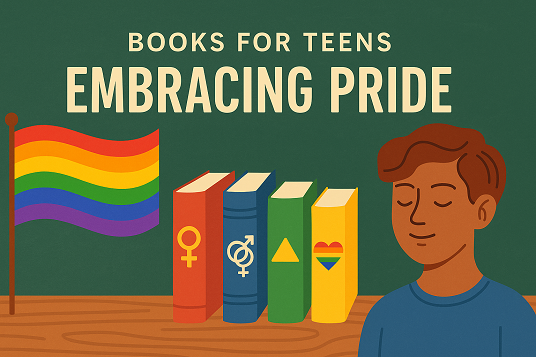
Every June, rainbow flags go up, corporate logos get a splash of colour, and the words Pride Month fill our timelines. But behind this month-long celebration lies something far deeper — an entire universe of history, identity, and stories that often remain outside the margins of our textbooks, especially here in India.
When we talk about queer histories, most people quickly say: Pride is an American concept. And yes, the Stonewall Riots of 1969 are often marked as the start of the modern LGBTQIA+ rights movement. But to believe that queer identities only exist where the parades happen is both lazy and inaccurate. Because if you look carefully — at temple walls, ancient texts, and folklore — you’ll find that India, too, has always had queer stories. We’ve just failed to write them down as part of our “official” history.
Take Mahabharat — where Shikhandi, a warrior born as a woman but raised as a man, plays a crucial role in Bhishma’s death. Or Brihannala, Arjuna’s year-long identity as a eunuch. Look at Khajuraho or Konark temples — where fluid sexual depictions exist without judgement. Even Mughal records speak softly of same-sex companionship. Yet none of these ever made it to our history chapters. Why? Because of historiography — the selective way in which history gets written, where lived experiences are often filtered through political, cultural or moral lenses. What we’re left with is history that’s comfortable — not always complete.
But while adults debate culture wars, there’s a rising generation of Indian teens who are quietly asking braver questions. More kids today — some as young as 12 or 13 — are exploring their gender identities, sexual orientations, or even just the vocabulary to describe what they feel. And many of them don’t know who to turn to. Some are scared of being mocked by peers. Others fear judgement from family. Teachers, too, often don’t have the training or language to guide them. The result? Stories like Aarvey Malhotra’s — a young boy who couldn’t bear the bullying he faced for his gender expression — remind us how deadly this silence can be.

Arvey Malhotra with his mother Aarti Malhotra
So where can these kids turn? Sometimes, the safest place to meet yourself is inside a book.
Here’s a small, carefully chosen list of books (curated with the help of AI) that may help teens (13+) begin that journey of understanding — about themselves or others:
1. Beyond the Gender Binary by Alok Vaid-Menon
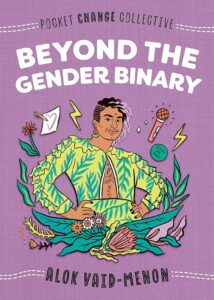
Written by a gender non-conforming writer of Indian origin, this is a short, deeply accessible introduction to gender fluidity.
2. The Boy & The Bindi by Vivek Shraya (Illustrated by Rajni Perera)
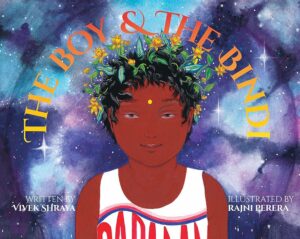
While more suitable for slightly younger kids, this beautifully illustrated book helps children embrace non-conformity and Indian culture together.
3. Pride: The Story of Harvey Milk and the Rainbow Flag by Rob Sanders
An excellent way to understand where the modern pride movement began, told through the story of the Pride flag’s creation.
4. Gender Identity: Beyond Pronouns and Bathrooms by Maria Cook
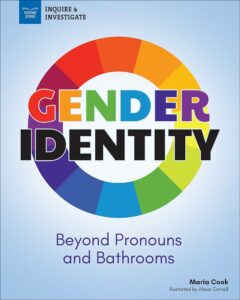
Written for teens, this breaks down gender identity, expression, dysphoria and non-binary identities in simple, compassionate language.
5. The Queer Hindu: A Spiritual Perspective by Devdutt Pattanaik (Selected Essays)
While not strictly a children’s book, certain essays by Pattanaik can open doors for older teens who wish to explore how queerness exists within Indic traditions.
6.Pet by Akwaeke Emezi
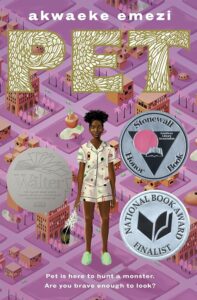
A young-adult novel that tackles identity, family, and justice in a tender, imaginative way by a non-binary author.
7. When Aidan Became a Brother by Kyle Lukoff
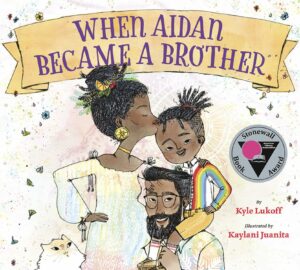
For kids exploring trans experiences, this picture book offers a gentle, positive portrayal of gender transition.
(Book covers- Amazon.in, Goodreads)
So why does Pride matter in schools?
This isn’t about imposing ideologies — it’s about offering answers to kids who are already asking. And if we want fewer kids like Aarvey to feel alone, confused, or ashamed, we need to stop treating gender and sexuality like topics too complicated for them to understand. They’re not. What they need are trusted spaces, the right words, and adults who listen without first judging.
After all, education was always meant to make us more human — and queerness, in all its forms, is part of that humanity.
Edutainment
Of Formulas and Frames: Why India Must Stop Dividing Science and Art
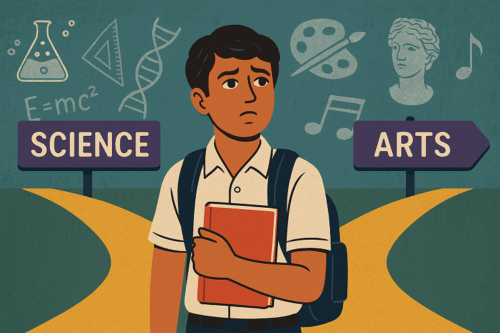
In a recent interview with Lallantop, Varun Grover—acclaimed writer, lyricist, comedian, and filmmaker—hit upon a truth so striking, it should’ve been plastered across school walls: India has lost its plot in nurturing innovators. And the reason? We’ve boxed our subjects—and our students—into separate lanes. Science on one side, art on the other. One wears lab coats, the other paints canvases. They rarely, if ever, meet.
Grover put it sharply: in India, we’ve created a caste-like hierarchy between subjects. Science students often carry the burden of “doing real work,” while arts students claim the higher ground of exploring life and meaning. The result? A deep-rooted disconnect. And it begins early—often in Class 11, when students are forced to pick a stream and silently abandon the rest of their interests.
But must a physicist give up poetry? Must a musician ignore algorithms?
It doesn’t have to be this way. At MIT, one of the world’s top science and tech universities, PhD students in Physics can take courses in music, design, or history—and earn credits for them. Why? Because innovation thrives where disciplines intersect. Because understanding how a flute works can teach you more about frequencies than a textbook diagram ever will.
Consider Steve Jobs, who credited a college calligraphy class for inspiring the Mac’s typography. Or Indian innovator Sonam Wangchuk, whose work in Ladakh seamlessly blends engineering with local art, architecture, and sustainability. His Himalayan Institute of Alternatives (HIAL) teaches future engineers and designers side-by-side, breaking the very silos our system has normalised.
Even Nobel laureate Richard Feynman once said, “I have a friend who’s an artist… He’ll hold up a flower and say, ‘Look how beautiful it is,’ and I’ll agree. But I can also see beauty in how the flower works—its structure, its physics. Science only adds to the beauty.”
And yet, in India, we continue to teach these as separate things. We train students to clear tests, not to create. We push them into IIT-JEE coaching at 13 and expect them to build world-changing ideas at 25.
This isn’t just an academic issue—it’s cultural. Our textbooks rarely reference architecture as both engineering and aesthetic legacy. Our school plays and science exhibitions are held in different corners of the building. Our awards are either for “Best Innovation” or “Best Performance”—never both.
The irony is painful. A land of classical music rooted in maths. A civilisation that built temples with astronomical precision. A country that once integrated dance, sculpture, and geometry with everyday life. And yet, we’ve chosen to modernise by compartmentalising.
It’s time we remember what Varun Grover reminded us of: the pyramid is both an engineering feat and an artistic marvel. And so is the human mind.
Let’s build an education system that stops asking children to choose between knowing and feeling, between numbers and narratives.
Let’s stop making them pick a lane—when the real magic happens at the crossroads.
Education
World Environment Day: Why Your School’s Environmental Education Needs a Cleanup
Education
Curriculum Controversy at Delhi University: Academic Voices Clash Over Syllabus Overhaul

Delhi University’s Executive Council (EC) has approved sweeping curriculum revisions that have sparked sharp protests from faculty members, igniting a fresh debate over academic freedom, ideological influence, and the future of higher education in India. The changes, ratified during the EC’s 1,275th meeting, affect multiple departments including Psychology, Sociology, and English, and introduce new programmes in journalism and nuclear medicine.
Among the most contentious shifts is the removal of conflict-based case studies from the Psychology of Peace paper. Case references to Kashmir, Palestine, India-Pakistan relations, and the Northeast have been replaced with conflict-resolution examples drawn from Indian epics like the Mahabharata and Bhagavad Gita. Similarly, a Sociology paper has dropped foundational thinkers like Karl Marx and Thomas Robert Malthus, along with key sections such as the Sociology of Food and the critical lens on the Sociology of Law.
Faculty members are sounding the alarm. As per a story in Business Standard, EC member and Associate Professor at Kirori Mal College, Rudrashish Chakraborty, called the changes “a complete disregard for disciplinary expertise” and warned they could severely damage DU’s global academic standing.
At the heart of the backlash is a deeper concern about ideological overreach in curriculum design. Critics say the move replaces rigorous, research-based frameworks with selectively religious narratives, undermining the pluralism that once defined Indian academia.
Why These Topics Were in the Curriculum in the First Place
Incorporating geopolitical issues like Kashmir and Palestine in social science syllabi wasn’t about courting controversy—it was about helping students understand conflict, diplomacy, and peace-building through lived realities. Scholars like Marx and Malthus, often labelled as ideologues, contributed frameworks that shaped global discourse on inequality, population, labour, and social justice. To erase them from academic memory is not just selective—it’s intellectually dishonest.
Their inclusion wasn’t about promoting one ideology over another but about exposing students to a spectrum of thought. If academic institutions stop encouraging intellectual plurality, they risk becoming echo chambers that simply mirror prevailing politics.
What Could Have Been Done Differently
If the aim was truly to Indianise or decolonise the curriculum—as has been cited in many recent reforms—it could have been done with scholarly rigour. Including Indian thinkers alongside global ones, offering critical engagement rather than replacement, and developing interdisciplinary modules that draw on Indian social realities would have strengthened rather than diluted the curriculum.
A meaningful curriculum reform should be inclusive, consultative, and pedagogically sound. Instead, these changes appear abrupt and top-down, with several faculty members alleging they were not adequately consulted. As one member remarked, “Modernisation cannot come at the cost of academic autonomy.”
The counter to a whitewashed curriculum should not be to do the exact opposite. Figures like Karl Marx are not just ideologists; their legacies extend beyond nation-states. They presented global ideas that remain relevant to Indian society, especially in an age grappling with inequality and labour rights.
And religion—while an important part of many societies—must never dominate education policy. When one faith is elevated in academic materials meant for students of all backgrounds, it chips away at the secular fabric of our democracy.
Replacing complex geopolitical issues with religious scripture is not only pedagogically flawed—it’s, frankly, a dangerous precedent.
New Programmes and Policy Decisions
Beyond the curriculum overhaul, DU has also announced the launch of a two-year M.A. in Journalism in both Hindi and English, and a BSc in Nuclear Medicine Technology, to be offered at the Army Hospital (R&R) for Armed Forces Medical Services personnel. The EC also introduced a new policy for determining teacher seniority, with age taking precedence over API scores when qualifications are equal.
A committee has been constituted to assess the implications of a DoPT circular mandating periodic review of employees aged 50 and above—raising concerns about forced retirement policies within the university system.
As the NEP rollout moves ahead, universities like DU need to walk the path wisely. Reforms should fuel learning, not push a story. Education isn’t meant to box students into ideologies—it’s meant to open minds, spark debate, and shape citizens who can think for themselves. Our classrooms should dig deeper, not go narrow. We can’t afford to swap knowledge for one-sided thinking.
Education
Kerala Reimagines Schooling: Social Awareness Over Syllabi in Bold New Reforms
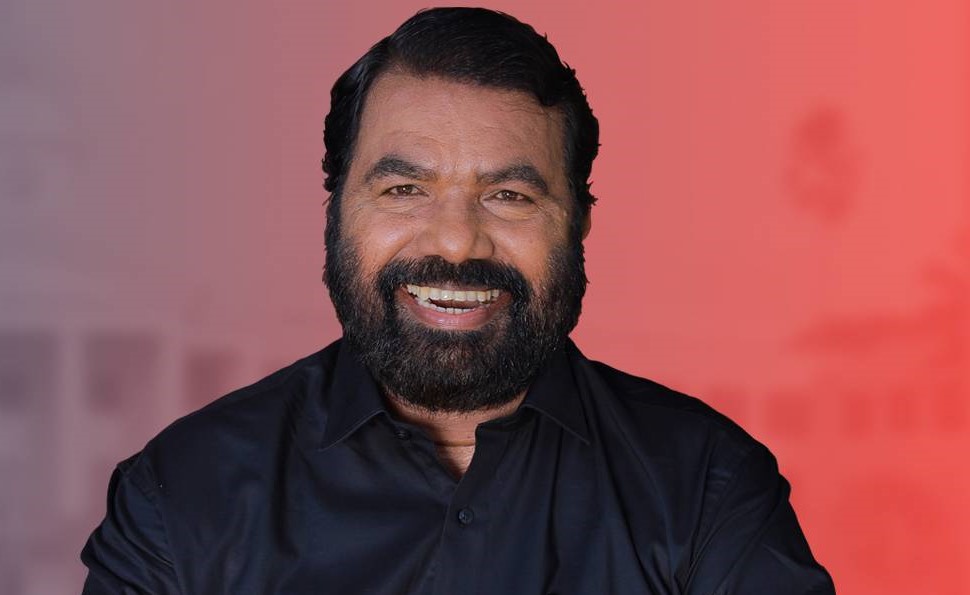
Kerala’s Department of Public Education is steering its schools in a direction few others in the country have ventured. With a growing emphasis on emotional well-being, civic sense, and digital discipline, the state has announced a series of reforms that aim to reframe the purpose and process of schooling in the 2025–26 academic year.
The most striking of these changes is the introduction of a two-week social awareness programme at the beginning of the school year for students from Classes 1 to 10, starting June 2. Higher secondary students will take part in a shorter version of the initiative from July 18. In this period, traditional textbooks will be set aside in favour of sessions that explore topics like drug abuse prevention, responsible social behaviour, emotional regulation, hygiene, gender sensitivity, and legal awareness.
The programme was designed in consultation with experts from the Police Department, Social Justice Ministry, Child Rights Commission, SCERT, and others, ensuring that content is both relevant and age-appropriate. Arts and sports will also be given space during this period, further promoting a holistic approach to education.
In addition to curriculum shifts, the department has issued a directive asking teachers not to create or share reels and videos on social media platforms during school hours. This move comes in light of growing concerns about distractions and the professional image of educators in the digital age.
These reforms reflect a deeper philosophical shift. Education Minister V Sivankutty’s vision seems to be one where schooling is not only about academic advancement but also about nurturing responsible, resilient individuals. While some critics may question the timing or implementation capacity of these reforms, the global education landscape suggests Kerala may be on the right track. Countries like Finland and New Zealand have already incorporated social-emotional learning and life skills into their core curricula, recognising that academic performance alone does not prepare students for an unpredictable world.
Are these reforms necessary? Given rising cases of student stress, substance abuse, and digital addiction, the answer may well be yes. By introducing these changes early in the academic calendar, Kerala is making a case for front-loading empathy, awareness, and life-readiness—concepts that are increasingly critical but often delayed in traditional schooling.
Whether this is a bold experiment or the beginning of a national shift remains to be seen. But there’s little doubt that other states will be watching closely.
Education
Human (Soft) Skills: The Missing Piece in School Curriculums

As the future of work continues to evolve at a breakneck pace, one thing is becoming increasingly clear: the ability to be human is our greatest advantage. In an age where automation and AI are reshaping industries, it’s no longer technical proficiency that sets students apart, it’s human skills.
And yet, our schools aren’t keeping up.
Globally, education systems remain heavily weighted towards academic and technical achievement. While these are certainly important, they no longer tell the whole story. Employers across sectors are united in their call for graduates who can communicate effectively, manage stress, work in diverse teams, and adapt to constant change.
Deloitte’s 2019 report The path to prosperity: Why the future of work is human found that by 2030, two-thirds of all jobs created will be reliant on human capabilities. These include empathy, creativity, collaboration, emotional intelligence, and the ability to learn continuously. All of which are underdeveloped in our current school structures.
This is not a theoretical problem. The impact is already being felt. Research consistently shows that up to 68% of high school students report feeling anxious, underprepared, and lacking the confidence to take the next step into work or further education. The transition from school to career requires more than ‘knowledge acquisition,’ it requires self awareness.
Human skills are the gateway to that self-awareness. They help students identify their strengths, regulate their emotions, communicate effectively, and develop resilience. These are the foundational competencies that allow young people to navigate uncertainty and thrive in a rapidly changing world.
Importantly, these skills are not innate. They are learned, practised, and refined over time — just like maths, science, or coding. When introduced early, human skill development empowers students with confidence and clarity. They learn how to navigate social complexity, resolve conflicts, deal with failure, and see growth as a lifelong journey rather than a fixed destination.
So, why aren’t we teaching these skills in schools as deliberately as we teach literacy or numeracy?
Perhaps it’s because human skills feel harder to measure. But we must shift our mindset. What we value, we measure — and what we measure, we teach. Forward-thinking educators and school leaders across the globe are beginning to incorporate social-emotional learning, strengths-based development, and mental wellbeing into their curriculums, recognising that these are not “nice-to-haves” — they are must-haves.
Imagine a student graduating from high school with not just academic marks, but a toolkit of emotional and interpersonal strengths: an understanding of who they are, what drives them, and how to manage themselves under pressure. Imagine a generation that sees learning as a lifelong pursuit and failure as a stepping stone rather than a setback.
This is the future we must design for.
It starts by giving human skills a seat at the table – not as a supplement to education, but as a core component of it. We need to empower educators with the tools and frameworks to deliver this kind of learning and where necessary provide expert facilitators to avoid adding more to the workload of educators. We need to engage students in real, reflective experiences that help them connect their inner world with the outer demands of life and work.
The most meaningful educational innovation doesn’t just teach students to do more. It teaches them to be more – to be self-aware, to be empathetic, to be adaptable. That’s how we create work-ready individuals and life-ready citizens.
The world doesn’t need more rote learners. It needs more critical thinkers, resilient leaders, and emotionally intelligent problem solvers. And the time to cultivate them is now – in our classrooms, through our curriculums, and with intention.
This article is authored by Renata Sguario
Renata Sguario is the founder and CEO of Maxme and the current chairman of the board of Future First Technology (formerly known as PS+C Limited), listed on the ASX (FFT), one of Australia’s leading end-to-end ICT and digital consulting organisations.
-

 Education2 months ago
Education2 months agoCBSE’s ‘Sugar Boards’ Initiative: Tackling the Sweet Crisis in Indian Schools
-
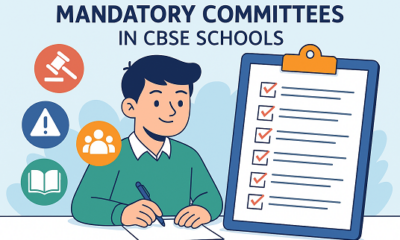
 Education3 months ago
Education3 months agoIs Your School Following These Mandatory CBSE Committees?
-
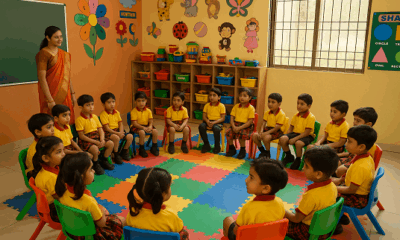
 Education3 months ago
Education3 months agoMaharashtra to Regulate Pre-Primary Education with New Law Aligned to NEP 2020
-
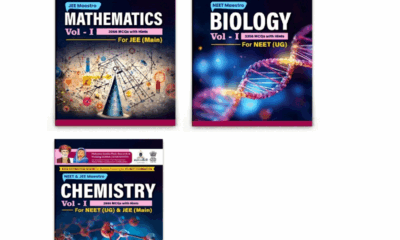
 Education3 months ago
Education3 months agoMAHAJYOTI’s Book Distribution Scheme to Empower 7,000 OBC Students Preparing for JEE/NEET & MHT-CET
-
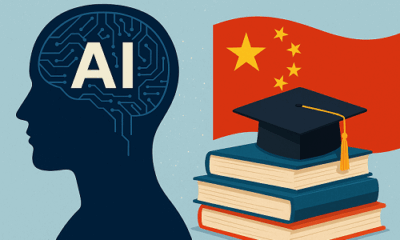
 Education3 months ago
Education3 months agoChina Embarks on Ambitious AI-Driven Education Reform to Build a ‘Strong Education Nation’ by 2035
-
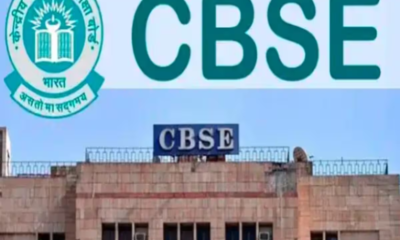
 Education3 months ago
Education3 months agoCBSE Introduces Mandatory Bridge Course for Classes 6 to 12 in Chhattisgarh Under NEP 2020
-
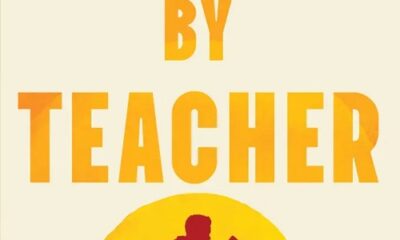
 Education2 months ago
Education2 months agoJohn King’s Book ‘Teacher By Teacher’: A Global Tribute to the Transformative Power of Education
-
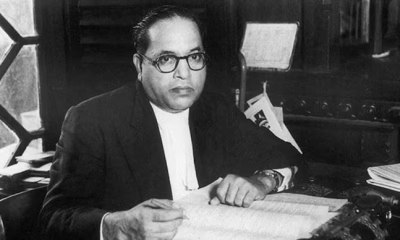
 Education3 months ago
Education3 months agoRewriting Ambedkar: Why Students Must Know the Man Beyond the Constitution
-

 Education3 months ago
Education3 months agoCBSE Mandates 50-Hour Annual Training for Teachers, Declares STEM as 2025 Theme
-
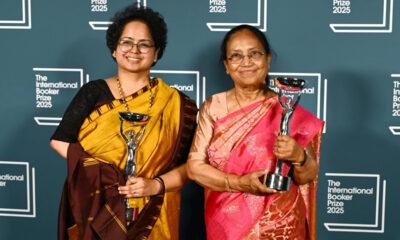
 Education2 months ago
Education2 months agoBanu Mushtaq’s International Booker Win Is a Wake-Up Call for Indian Schools to Reclaim Literature




